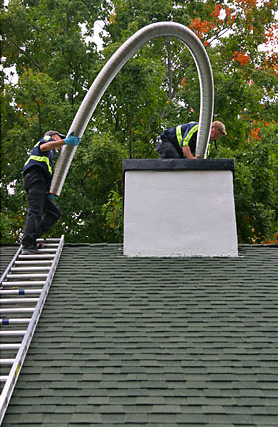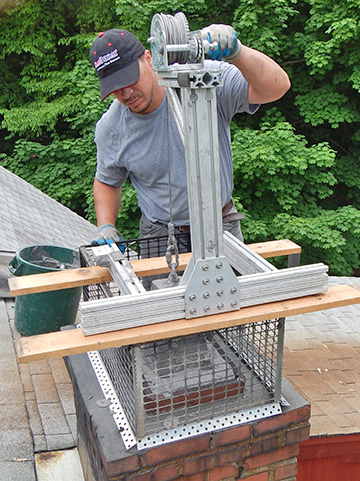The Fundamentals on Chimney Liners

A new chimney liner always comes with the peace of mind that you can now safely build a fire in your fireplace.
It is not unusual for a homeowner to get the news that a new chimney liner is needed in order to safely burn fires in the fireplace or wood stove. Many are doubtful because they’ve heard stories of chimney sweeps scamming people by falsely telling them expensive repairs are needed on their home. Unfortunately, many have fallen prey to scammers, but that doesn’t detract from the fact that chimney liners must be free of cracks and other forms of deterioration in order to function as they are designed to.
Functions of Chimney Liners
Chimney liners do not last forever, but they can last about 50 years. The three important functions of flue liners are:
- Liners protect combustible parts of the home from being exposed to extreme heat. Tests have been done which proved that the heat in unlined chimneys quickly moves to adjacent combustibles, causing woodwork to burst into flames within as little as 3 ½ hours. A crack in a liner is enough to have the same hazardous results, however it may not happen as quickly as it does with no liner at all.
- Liners protect chimney masonry from the corrosive byproducts produced by combustion materials. The usable life of a chimney is cut short when the acidic flue gases destroy mortar joints from the inside of the chimney. As mortar joints erode, deadly carbon monoxide fumes can leak into a home’s living areas. In addition, heat can transfer to nearby combustibles more quickly in the absence of sound mortar joints.
- Liners can be fit so that appliances can operate at top efficiency. If a liner is not the correct size, several problems can occur. For example, the draft may not work properly and highly flammable creosote may build up on the liner more rapidly.
Primary Types of Chimney Liners
Clay Tile
When chimneys are built, the linings are made with clay tiles, the vast majority of the time. Clay tiles are the overwhelming favorite because they are the least expensive,incredible durable, and can last up to five decades. Being ceramic, clay tiles do not rapidly absorb nor evenly distribute heat, which results in uneven expansion. For this reason, the tiles eventually begin to split apart and crack.
Replacing a clay tile liner with another material is preferable, since it is a labor-intensive task, often involving breaking through every few feet of outer brick.
Metal
Metal liners are the least complicated to install. Stainless steel liners are very popular among installers and are suitable for use with gas, oil, and wood-burning applications. Aluminum flues are a lot less expensive but can only be used for some medium-efficiency gas-fueled appliances.
 Cast-in-Place
Cast-in-Place
Cast-in-place chimney liners are poured-cement flues that provide numerous benefits. They are durable, lasting about 50 years. Cast-in-place liners provide excellent insulation properties, which results in cleaner burning and a reduction in the accumulation of creosote. Whether poured inside chimney walls or an existing flue, these poured-cement flues can provide stability to the chimney that didn’t exist before. These flues stand up very well against acids, extreme heat, and condensation.
Contact our chimney professionals today for a flue inspection and for any questions you may have about the condition of your chimney lining.
Northeastern Chimney, Inc
37 Cody Street, West Hartford, CT 06110
Phone: 860-233-5770


